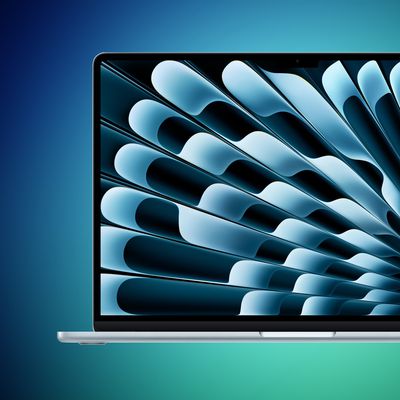Apple Expected to Use TSMC's Advanced 5nm+ and 4nm Technologies for Future iPhone Chips, Likely Macs Too
While the A14 Bionic chip in iPhone 12 models was the first chip in the smartphone industry to be manufactured based on a 5nm process, Apple and its chipmaking partner TSMC are reportedly pushing ahead on even smaller nodes.

Taiwanese research firm TrendForce today reported that Apple plans to use TSMC's next-generation 5nm+ process for the A15 chip in 2021 iPhones. TSMC's website says the 5nm+ process, which it refers to as N5P, is the "performance-enhanced version" of its 5nm process that will deliver additional power efficiency and performance improvements.
Looking farther ahead, TrendForce believes it is highly likely that the A16 chip in 2022 iPhones will be manufactured based on TSMC's future 4nm process, paving the way for further improvements to performance, power efficiency, and density.
These continued process advancements should result in future iPhones continuing to provide industry-leading performance among smartphones, while the power efficiency gains could contribute to longer battery life. And considering that TSMC also manufactures Apple Silicon chips, including the 5nm-based M1 chip, these process advancements will likely extend to Apple's chips in future Macs — perhaps an "M1X" or "M2" chip or so forth.
Rumors suggest that future Apple Silicon Macs will include new 14-inch and 16-inch MacBook Pro models with an all-new form factor as early as Q2 2021, in addition to a redesigned 24-inch iMac and a smaller version of the Mac Pro.
Popular Stories
iOS 26 was released last month, but the software train never stops, and iOS 26.1 beta testing is already underway. So far, iOS 26.1 makes both Apple Intelligence and Live Translation on compatible AirPods available in additional languages, and it includes some other minor changes across the Apple Music, Calendar, Photos, Clock, and Safari apps.
More features and changes will follow in future ...
With the fourth betas of iOS 26.1, iPadOS 26.1, and macOS 26.1, Apple has introduced a new setting that's designed to allow users to customize the look of Liquid Glass.
The toggle lets users select from a clear look for Liquid Glass, or a tinted look. Clear is the current Liquid Glass design, which is more transparent and shows the background underneath buttons, bars, and menus, while tinted ...
Apple plans to cut production of the iPhone Air amid underwhelming sales performance, Japan's Mizuho Securities believes (via The Elec).
The Japanese investment banking and securities firm claims that the iPhone 17 Pro and iPhone 17 Pro Max are seeing higher sales than their predecessors during the same period last year, while the standard iPhone 17 is a major success, performing...
Apple's software engineers continue to internally test iOS 26.0.2, according to MacRumors logs, which have been a reliable indicator of upcoming iOS versions.
iOS 26.0.2 will be a minor update that addresses bugs and/or security vulnerabilities, but we do not know any specific details yet.
The update will likely be released by the end of next week.
Last month, Apple released iOS 26.0.1,...
While the new iPad Pro's headline feature is the M5 chip, the device has some other changes, including N1 and C1X chips, faster storage speeds, and more.
With the M5 chip, the new iPad Pro has up to a 20% faster CPU and up to a 40% faster GPU compared to the previous model with the M4 chip, according to Geekbench 6 results. Keep in mind that 256GB and 512GB configurations have a 9-core CPU,...
iOS 26.4 is expected to introduce a revamped version of Siri powered by Apple Intelligence, but not everyone is satisfied with how well it works.
In his Power On newsletter today, Bloomberg's Mark Gurman said some of Apple's software engineers have "concerns" about the overhauled Siri's performance. However, he did not provide any specific details about the shortcomings.
iOS 26.4 will...
Apple on Wednesday updated the 14-inch MacBook Pro, iPad Pro, and Vision Pro with its next-generation M5 chip, but previous rumors have indicated that the company still plans to announce at least a few additional products before the end of the year.
The following Apple products have at one point been rumored to be updated in 2025, although it is unclear if the timeframe for any of them has...
With the fourth beta of iOS 26.1, Apple added a toggle that makes Liquid Glass more opaque and reduces transparency. We tested the beta to see where the toggle works and what it looks like.
Subscribe to the MacRumors YouTube channel for more videos.
If you have the latest iOS 26.1 beta, you can go to Settings > Display and Brightness to get to the new option. Tap on Liquid Glass, then...
Apple plans to launch MacBook Air models equipped with the new M5 chip in spring 2026, according to Bloomberg's Mark Gurman. Apple is also working on M5 Pro and M5 Max MacBook Pro models that will come early in the year.
Neither the MacBook Pro models nor the MacBook Air models are expected to get design changes, with Apple focusing on simple chip upgrades. In the case of the MacBook Pro, a m...

























